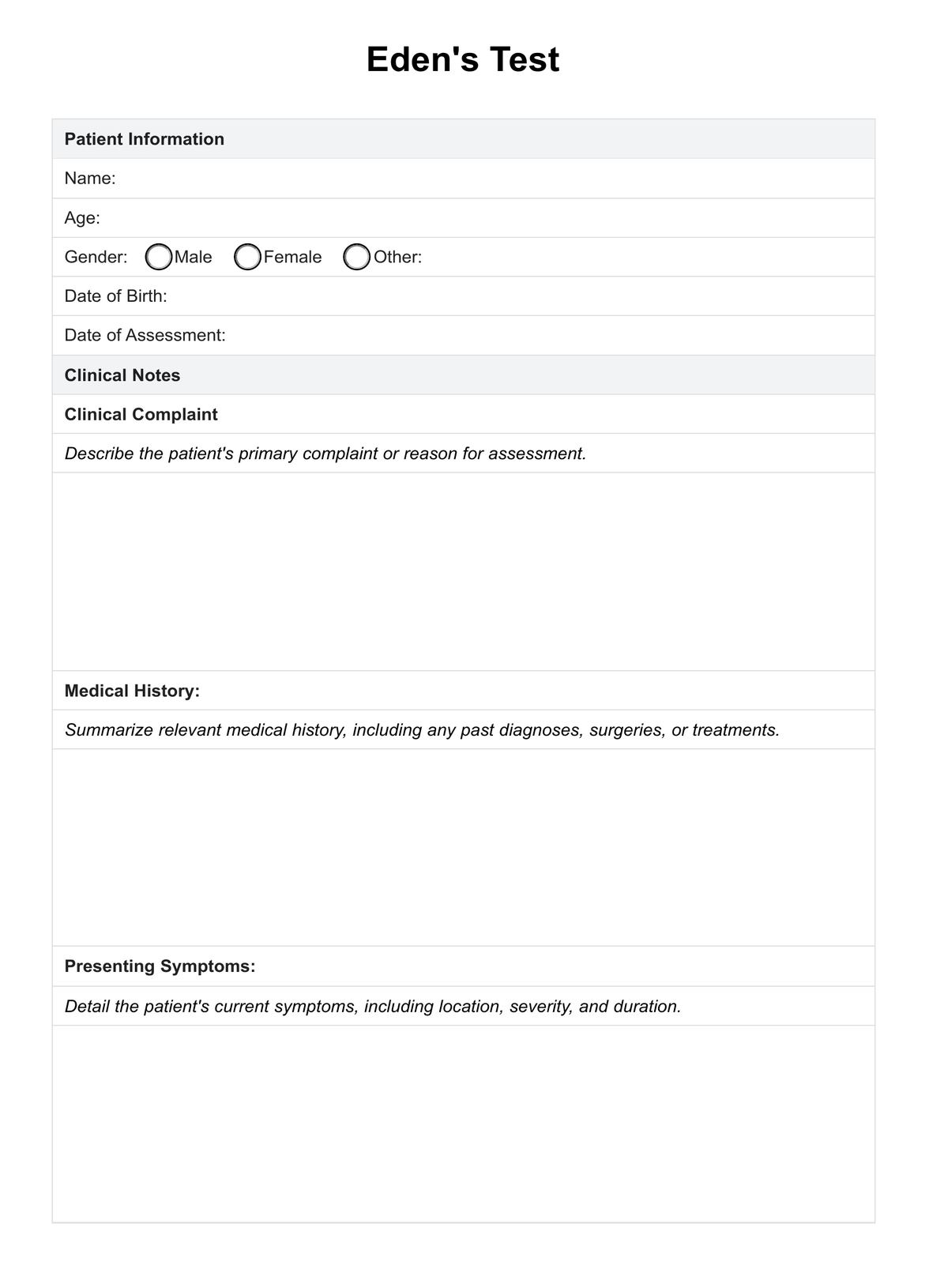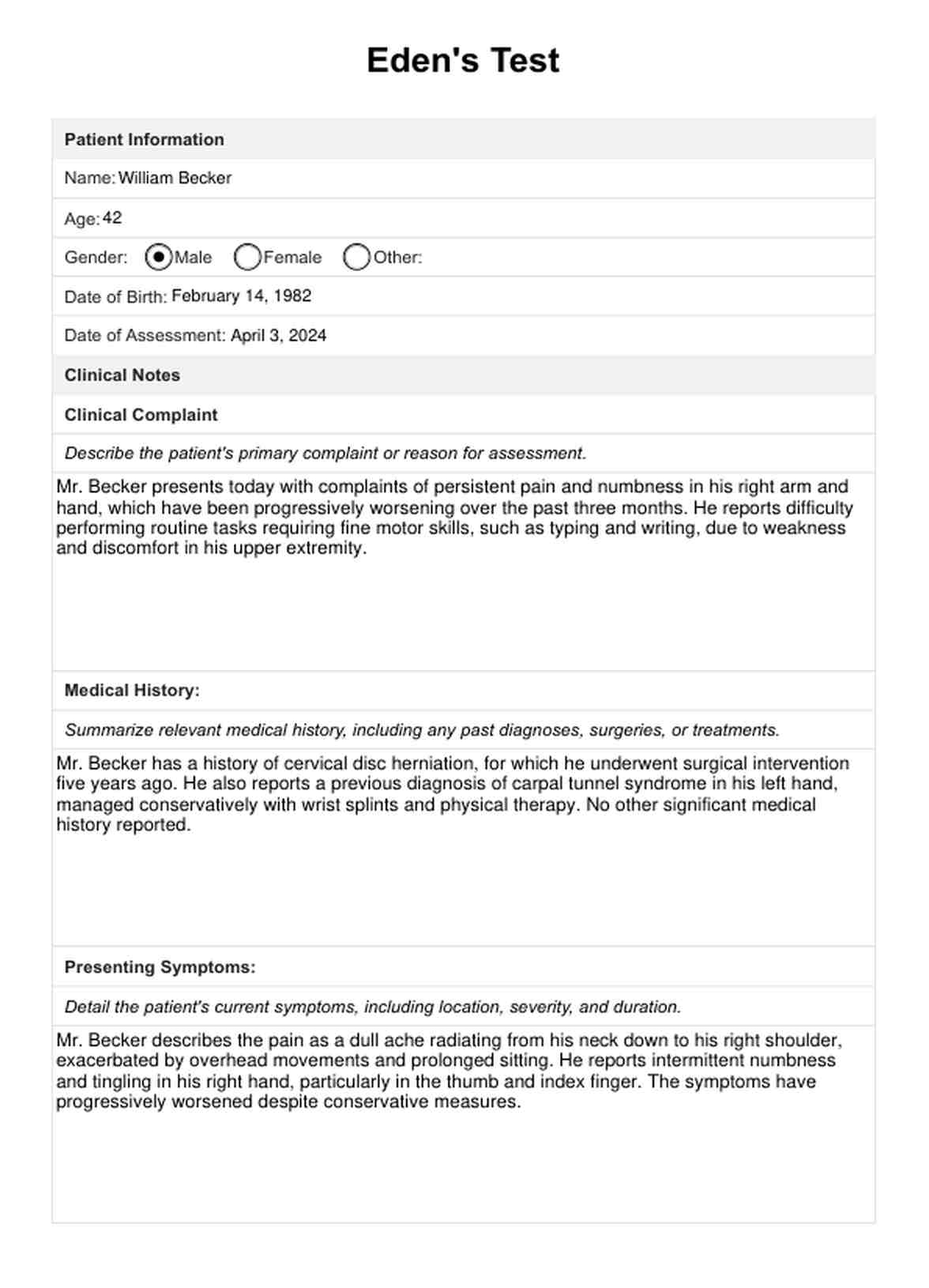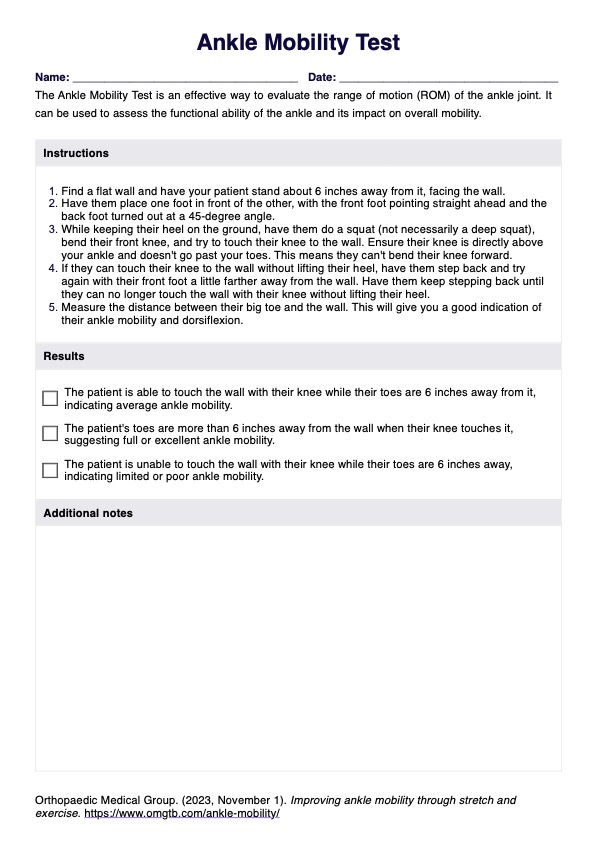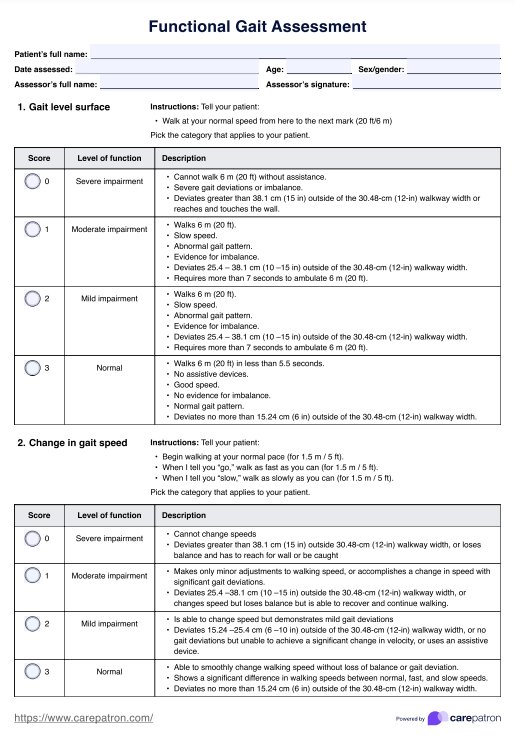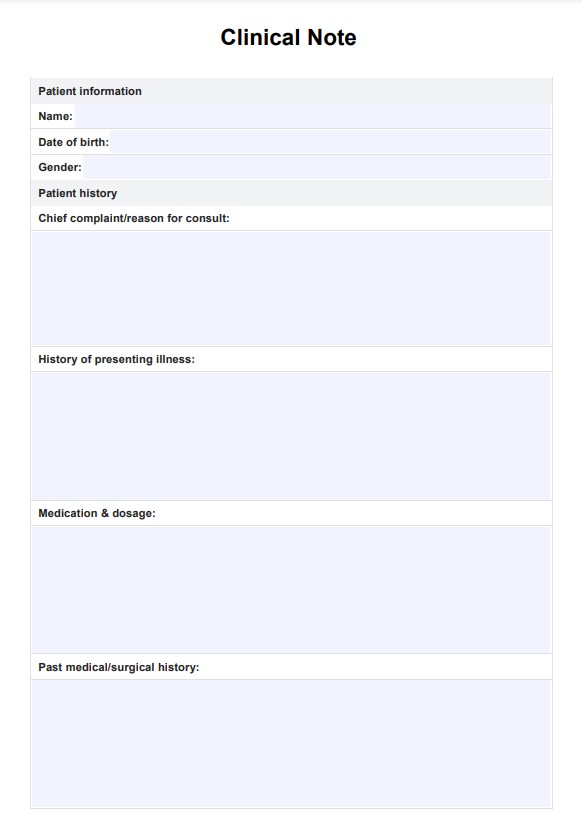Eden's Test
Discover the significance of Eden's Test in diagnosing thoracic outlet syndrome. Learn how this maneuver aids in identifying neurovascular compression.


What is thoracic outlet syndrome (TOS)?
Thoracic Outlet Syndrome (TOS) refers to a group of conditions characterized by compression of nerves, arteries, or veins in the thoracic outlet area, located between the base of the neck and the armpit. One common test used to diagnose TOS is the military brace test, also known as the military position test. This diagnostic maneuver involves positioning the shoulders and arms as if at attention, which can exacerbate symptoms in affected individuals.
A prevalent subtype of TOS is Costoclavicular Syndrome, where compression occurs between the clavicle and the first rib. Symptoms of TOS can vary but often include pain, numbness, tingling, or weakness in the upper extremity. During the costoclavicular test, clinicians may also assess for a weakened or absent radial pulse, indicating vascular involvement.
A cervical rib, an extra one above the first rib, can predispose individuals to TOS. Additionally, performing the military brace test or deep breath maneuvers may elicit positive findings, further supporting the diagnosis. Treatment options for TOS range from conservative measures like physical therapy to surgical intervention, depending on the severity and underlying cause. Early detection and intervention are crucial for managing symptoms and improving the quality of life for individuals with TOS.
What are the symptoms?
According to the National Institute of Neurological Disorders and Stroke (n.d.), thoracic outlet syndrome encompasses three related syndromes involving compression of nerves, arteries, and veins in the lower neck and upper chest area.
Thoracic outlet syndrome (TOS) encompasses three related syndromes involving compression of nerves, arteries, and veins in the lower neck and upper chest area, resulting in pain in the arm, shoulder, and neck. Symptoms vary based on the type of TOS:
- Neurogenic TOS: Symptoms include the "Gilliatt-Sumner hand," characterized by severe wasting in the fleshy base of the thumb. Other symptoms may involve:
- Paresthesias (tingling or numbness) in the fingers and hand.
- Changes in hand color.
- Cold hands.
- Dull aching pain in the neck, shoulder, and armpit.
- Venous TOS: Manifestations comprise:
- Pallor (paleness) in the affected arm.
- Weak or absent pulse in the affected arm, which may feel cool and appear paler than the unaffected arm.
- Numbness, tingling, aching, or swelling of the arm and fingers.
- Weakness of the neck or arm.
- Arterial TOS: Symptoms include:
- Changes in hand and finger color.
- Sensitivity to cold in the hands and fingers.
- Swelling, heaviness, tingling, numbness, and poor blood circulation in the arms, hands, and fingers.
The prognosis varies by TOS type. Most individuals experience improvement with exercise and physical therapy. However, those with vascular TOS and true neurogenic TOS often require surgery to alleviate pressure on the affected vessel or nerve. Early diagnosis and appropriate management are crucial for improving outcomes and relieving symptoms associated with TOS.
Diagnostic process
The diagnostic process for thoracic outlet syndrome (TOS) is thorough, starting with a detailed review of the patient's medical history, focusing on symptoms and any activities that exacerbate or relieve these symptoms. The physical examination is comprehensive, incorporating visual inspection of the patient's posture, observation of any skin changes or hand muscle atrophy, and palpation to detect any unusual signs.
During the physical examination, the healthcare provider performs several provocative tests to provoke symptoms characteristic of TOS. These tests include the supraclavicular pressure test, Adson test, Eden's test (costoclavicular test/maneuver), Wright test, Roos test (elevated arm stress test), and Cyriax release test. It's important to note that these tests can yield false positives, so results should be interpreted with caution.
Further diagnostic testing is essential for confirming the presence of TOS and may include a variety of imaging and functional tests. X-rays and CT scans are utilized to identify anatomical abnormalities such as cervical ribs which may contribute to compression. Additionally, Electromyography (EMG), Nerve Conduction Velocity (NCV) tests, vascular ultrasound, and angiography are employed to assess the extent of nerve and vascular involvement.
Eden's Test Template
Eden's Test Example
What is the Eden's Test?
The Eden's test is a crucial diagnostic maneuver in assessing thoracic outlet syndrome, particularly the costoclavicular syndrome subtype.
During the test, the patient is instructed to adopt a military-like posture by pushing the chest out and pulling the shoulders back, akin to standing at attention. Simultaneously, the therapist palpates the strength of the radial pulse, aiming to detect any weakening or alteration. This posture adjustment brings the first rib forward and moves the clavicle backward, narrowing the space between them potentially compressing the subclavian artery in the costoclavicular space.
A positive finding in Eden's test manifests as a weakening of the radial pulse, indicating potential compression of the subclavian artery and implicating involvement of the brachial plexus. This diagnostic maneuver is valuable in identifying patients with thoracic outlet syndrome, formulating appropriate treatment plans and interventions to alleviate symptoms and improve quality of life.
Results and interpretation
Interpreting the results of the Eden's test involves recognizing changes in the strength of the radial pulse during the maneuver. If the radial pulse weakens or becomes impalpable during the military brace position, it suggests compression of the subclavian artery. This compression, in turn, implicates possible costoclavicular syndrome, a form of TOS characterized by neurovascular compression in the costoclavicular space (Physiopedia, n.d.).
Understanding the significance of a positive Eden's test result is essential for healthcare professionals in diagnosing and managing patients with TOS. A positive test finding provides valuable information about the underlying pathology, guiding further diagnostic evaluation and treatment planning. It allows clinicians to tailor interventions to address the specific neurovascular compression observed during the maneuver, thereby improving patient outcomes and quality of life.
In summary, the Eden's test is a valuable diagnostic maneuver for identifying costoclavicular syndrome, a subtype of thoracic outlet syndrome. Interpreting the results of the test involves assessing changes in the radial pulse strength during the military brace position, with a positive finding indicating potential subclavian artery compression. This interpretation guides clinicians in formulating appropriate treatment strategies to address neurovascular compression and alleviate symptoms associated with TOS.
Next steps
Following a positive Eden's Test indicating thoracic outlet syndrome, the next steps involve implementing a comprehensive treatment plan. This may include physical therapy to improve posture and strengthen muscles, ergonomic modifications to reduce strain on the affected area, and pain management strategies such as medication or nerve blocks.
Patient education regarding posture awareness and lifestyle modifications is crucial for long-term symptom management. Regular follow-up appointments are recommended to monitor progress and adjust treatment as needed, ensuring optimal outcomes and improved quality of life for the patient.
Research and evidence
Research on the diagnostic accuracy of physical examination tests and postural maneuvers in patients with thoracic outlet syndrome (TOS) has provided valuable insights into the clinical evaluation of this condition.
Demirbag, et al. (2007) conducted a double-blind, controlled study to investigate the relationship between magnetic resonance imaging (MRI) findings and various physical examination tests in patients with TOS. The study aimed to assess the diagnostic utility of these tests in identifying neurovascular compression within the thoracic outlet.
The research involved a cohort of patients diagnosed with TOS based on clinical criteria, including history and physical examination findings. MRI imaging was used to confirm the presence of structural abnormalities, such as cervical ribs or bony anomalies, contributing to neurovascular compression. Physical examination tests, including Adson's maneuver and Eden's Test (military brace test), were performed to assess symptom reproduction and exacerbation.
The study's findings revealed a significant correlation between MRI findings and positive physical examination tests, indicating the high diagnostic accuracy of these maneuvers in identifying neurovascular compression in patients with TOS. Specifically, Adson's maneuver and Eden's Test demonstrated good sensitivity and specificity in reproducing symptoms associated with thoracic outlet compression.
This research contributes to the growing body of evidence supporting the clinical utility of physical examination tests and postural maneuvers in diagnosing thoracic outlet syndrome. The study underscores the importance of a comprehensive clinical assessment, including history, physical examination, and diagnostic imaging, to accurately diagnose and effectively manage patients with TOS. Further research is warranted to validate these findings and refine diagnostic algorithms for improved patient care.
Reference
Demirbag, D., Unlu, E., Ozdemir, F., Genchellac, H., Temızoz, O., Ozdemır, H., & Demır, M. K. (2007). The relationship between magnetic resonance imaging findings and postural maneuver and physical examination tests in patients with thoracic outlet syndrome: Results of a double-blind, controlled study. Archives of Physical Medicine and Rehabilitation, 88(7), 844–851. https://doi.org/10.1016/j.apmr.2007.03.015
Costoclavicular or military brace or Eden’s test. (2022). Physiopedia. https://www.physio-pedia.com/Costoclavicular_or_Military_Brace_or_Eden%E2%80%99s_Test
Commonly asked questions
To perform the Eden's Test, the patient is instructed to retract their shoulders and bring their shoulder blades together, mimicking the military position. The h
The Eden's Test is indicated in patients presenting with symptoms suggestive of thoracic outlet syndrome, such as pain, numbness, tingling, or weakness in the neck, shoulder, arm, or hand.
A positive Eden's Test result is characterized by exacerbation or reproduction of symptoms, indicating compression of neurovascular structures within the thoracic outlet, such as the brachial plexus or subclavian artery.


